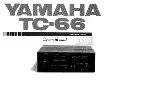
7-30
TM-403 User’s Guide
Adjusting PSA Seal Quality
D292105.9b.fm
Adjusting PSA Seal Quality
If a
Peel Force Test
determines the
PSA Sealer
is not generating a satisfactory seal, try one of
the adjustments below to improve seal strength.
Check Sealer Settings
Open the HMI
Taper Tab
. Review the settings on the four
Taper
Tab
screens to ensure
Tape
Settings
and
Sealer Settings
are appropriate for the current job.
Materials Used
For a
PSA seal,
seal strength is determined first by the nature of the materials used. It is nor-
mally recommended to use the same brand of cover and carrier tapes together as the manufac-
turers use the appropriate adhesive to match the material used to make the carrier tapes.
Seal Roller Pressure
The second factor in PSA seal strength is the pressure applied to the cover tape as it is sealed to
the carrier tape. The seal should appear as a solid stripe and it should not show any inconsisten-
cies. If it does, the alignment of the cover tape should be confirmed and then the pressure to the
seal rollers adjusted.
On the top of each sealer block, there are three
holes with a screw in the center hole. With carrier
and cover tape loaded, spin the
Sealer Wheel
.
While spinning the
Sealer Wheel,
turn the screw
clockwise until the wheel no longer spins freely,
then turn the screw another 1/8 turn. The wheel
should be firmly in contact with the tape.
Adjust the seal roller pressure until the PSA
adhesive is firmly adhered to the carrier tape.
Experience will allow the operator to judge the correct adjustment by feel. Repeat for the other
sealer wheel.
Note:
Excessive roller pressure may cause carrier tape advance problems or elongation
of sprocket holes in the carrier tape.
PSA Seal
Adjustment
Screws
Pressure



































